Saxophone Mouthpiece Bite Repair
Some reed players are a bit rough on the beak of their mouthpieces. This can be really problematic on some brands of mouthpiece like vintage MC Gregory, where it is easy to bite clean through the beak into the chamber. It would be easy to just use a mouthpiece patch, but some people don’t like them. If you’re a biter, the repair is pretty easy. A buddy of mine has done a number on the beak of his modern Otto Link tenor saxophone mouthpiece. We should be able to get this back in shape for him before permanent damage happens to the mouthpiece.
Here’s what I used:
- 3M Scotch Weld
- Painters tape
- 220 grit sandpaper
- 320 grit sandpaper
- 600 grit sandpaper
- 0000 steel wool
- Meguiar’s ScratchX 2.0
Here’s what I’m starting with:

I cleaned the piece with some white vinegar diluted about 1:1.
Now I can really see what needs to be done:
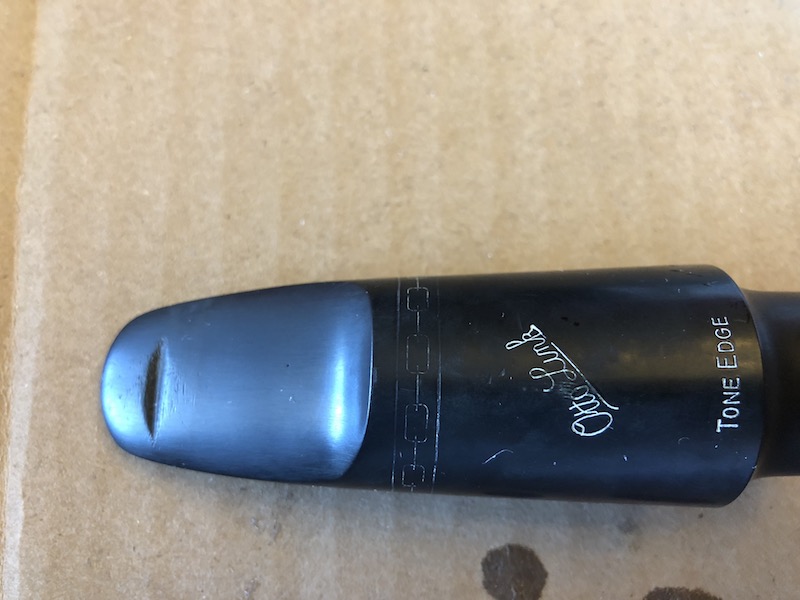
I masked off the area I’m going to be filling with some blue painters tape. Find this at any local hardware store with a paint area.
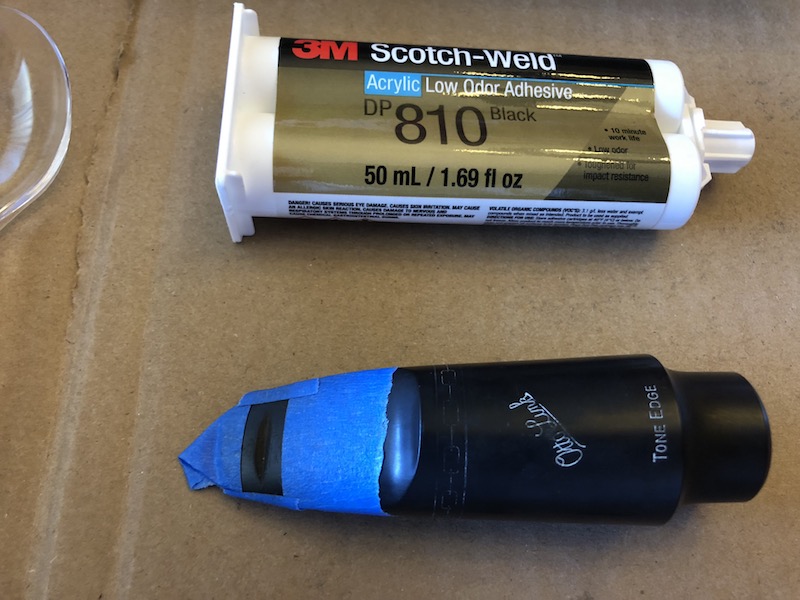
I’m working on some cardboard. After masking this off, I mix up just a little bit of the Scotch-Weld and work it together for about a minute to a minute and a half. Put it in the window you’ve masked off.
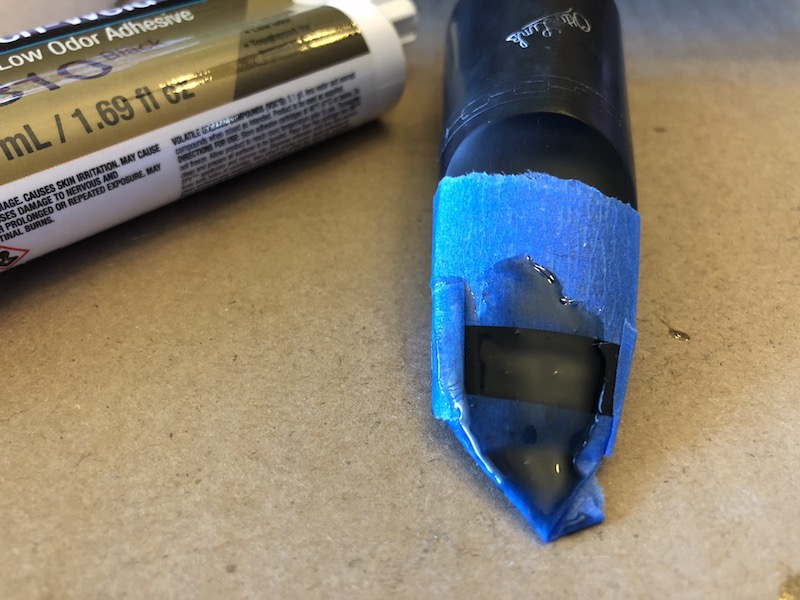
I think I’ve been a bit overzealous in the amount I used, but this will just make for a longer curing time. For now, I’m going to remove the tape and just let it sit for a couple hours.
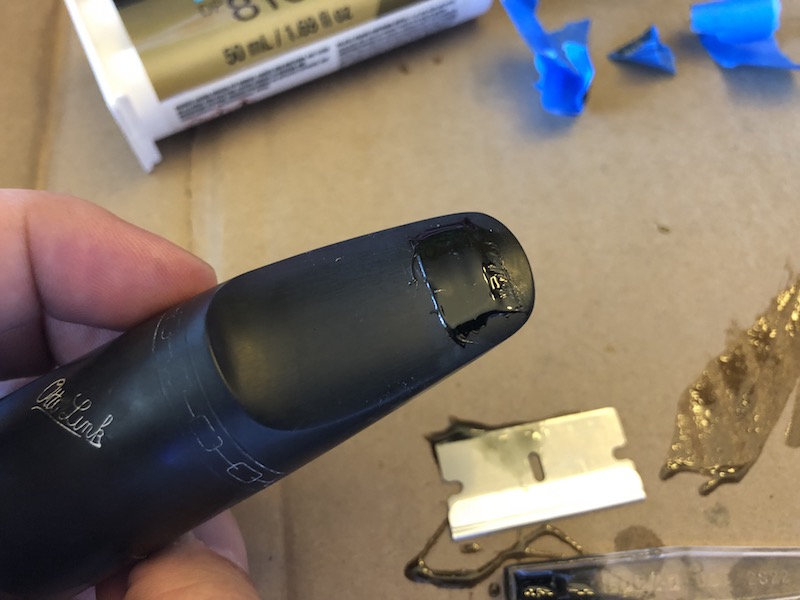
Sanding!
Now we’re going to do something you’ve been taught since day one to never do. Take sandpaper to a mouthpiece.
Before we go any further, a standard disclaimer is necessary here. One wrong move and you can ruin your mouthpiece. It isn’t my fault if you ruin your virgin 1950 Florida “Slant Sig” Otto Link because you read something here.
However, Just be careful and stay away from the tip & rail of your piece. You need to concentrate on where you put the Scotch-Weld and work to make that even with the beak of the piece. It might look a bit scary once you get going. A good quality hard-rubber mouthpiece will shine up nicely.
Here’s what I have after sanding with 220 grit sandpaper.
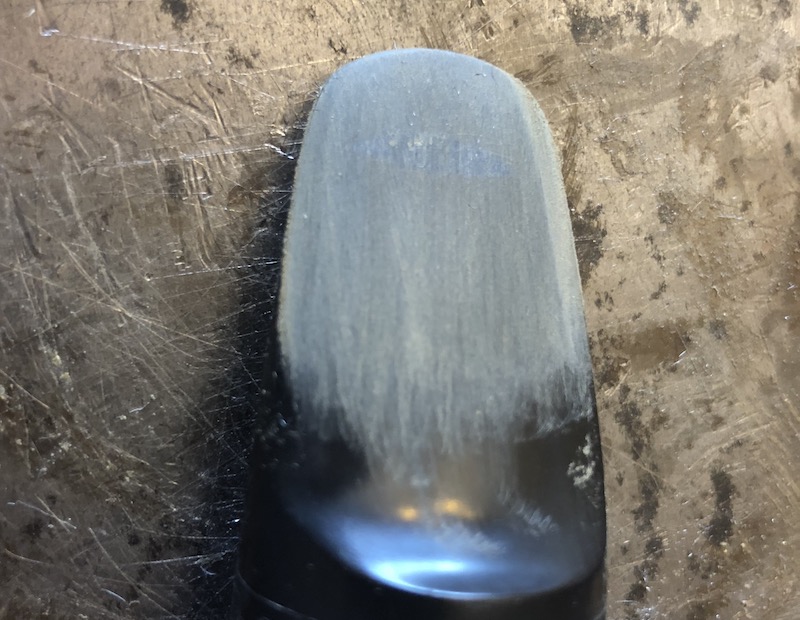
I went up to 320, 600, 900, #0000 steel wool and polished with the Meguiar’s ScratchX 2.0 and a soft paper towel.

There ended up being a couple small microholes I fixed up before calling it on this.

I’m giving this back to my buddy with a $3.50 patch on the beak of the mouthpiece. Seriously, just use them. It is a cheap investment for a mouthpiece that costs hundreds of dollars :)